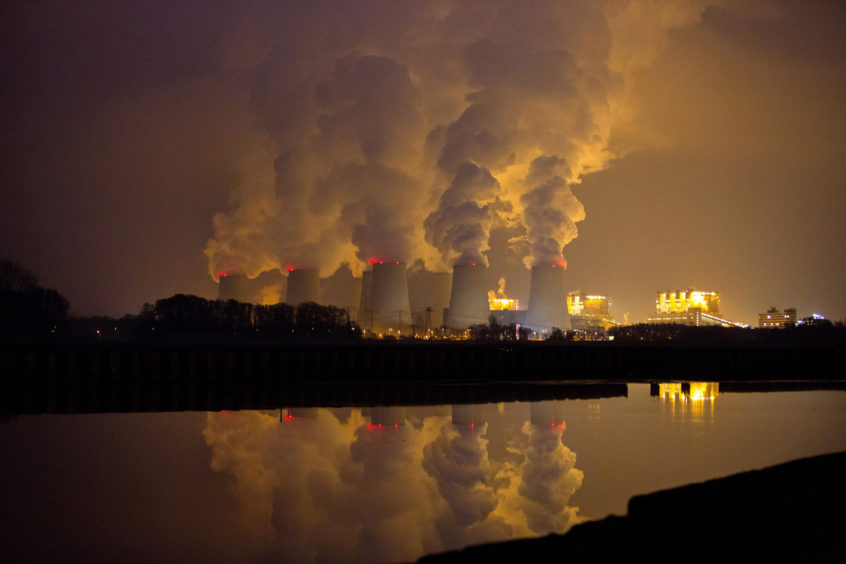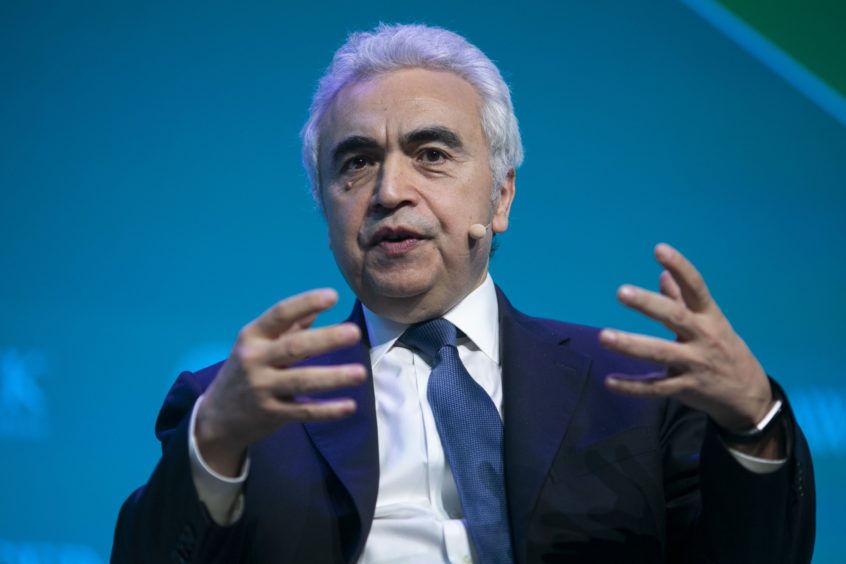
Progress towards a clean energy system is “still far too slow” to be compatible with net zero by 2050, a report has claimed.
In order to address this, the International Energy Agency (IEA) has underlined the need for world leaders to make an “unmistakable signal of ambition and action” at COP26 next month.
The IEA released its flagship World Energy Outlook 2021 study on Wednesday.
It is designed to act as a “handbook” for the United Nations COP26 climate conference in Glasgow, which offers a “critical opportunity” to accelerate action to bring down emissions.
The report acknowledged that a new energy economy is emerging globally as solar, wind, electric vehicles and other low-carbon technologies flourish.
But the IEA also delivers a stark warning about the direction in which governments are taking the world.
Even as deployments of solar and wind go from strength to strength, the world’s consumption of coal is growing strongly this year, pushing carbon dioxide emissions towards their second largest annual increase in history, the report found.
Fatih Birol, the IEA’s executive director, said: “The world’s hugely encouraging clean energy momentum is running up against the stubborn incumbency of fossil fuels in our energy systems.
“Governments need to resolve this at COP26 by giving a clear and unmistakeable signal that they are committed to rapidly scaling up the clean and resilient technologies of the future.
“The social and economic benefits of accelerating clean energy transitions are huge, and the costs of inaction are immense.”
As well as highlighting the issues with the current energy system, the outlook set out what needs to be done to move beyond pledges to a trajectory that would reach net zero emissions globally by 2050.
The report explores two scenarios to gain insights into how the global energy sector may develop over the next three decades – and what the implications would be.
The Stated Policies Scenario represents a path based on the energy and climate measures governments have actually put in place to date, as well as specific policy initiatives that are under development.
In this situation, almost all of the net growth in energy demand through 2050 is met by low emissions sources, but that leaves annual emissions still around today’s levels.
As a result, global average temperatures are still rising when they hit 2.6 °C above pre-industrial levels in 2100.
The Announced Pledges Scenario maps out a path in which the net zero emissions pledges announced by governments so far are implemented in time and in full.
In this scenario, demand for fossil fuels peaks by 2025, and global CO2 emissions fall by 40% by 2050.
All sectors see a decline, with the electricity sector delivering by far the largest – the global average temperature rise in 2100 is held to around 2.1 °C.
For the first time in a WEO, oil demand goes into eventual decline in all the scenarios examined, although the timing and speed of the drop vary widely.
If all today’s announced climate pledges are met, the world would still be consuming 75 million oil barrels per day by 2050 – down from around 100 million today – but that plummets to 25 million in the Net Zero Emissions by 2050 Scenario, which was published by the IEA in May and is consistent with the Paris Agreement.
Natural gas demand increases in all scenarios over the next five years, but there are sharp divergences after this.
Dr Birol said: “Today’s climate pledges would result in only 20% of the emissions reductions by 2030 that are necessary to put the world on a path towards net zero by 2050.
“Reaching that path requires investment in clean energy projects and infrastructure to more than triple over the next decade. Some 70% of that additional spending needs to happen in emerging and developing economies, where financing is scarce and capital remains up to seven times more expensive than in advanced economies.”
The IEA report has come in the middle of a global energy crisis, as demand for key commodities, such as oil and gas, outstrips supply.
The problem has been coincided with a period of low wind speeds, meaning renewable sources have been unable to pick up the slack.
There are fears that if the northern hemisphere is hit by a cold spell, European gas supplies could be exhausted by the end of the winter.
Dr Birol added: “There is a looming risk of more turbulence for global energy markets.
“We are not investing enough to meet future energy needs, and the uncertainties are setting the stage for a volatile period ahead. The way to address this mismatch is clear – a major boost in clean energy investment, across all technologies and all markets. But this needs to happen quickly.”
Recommended for you


